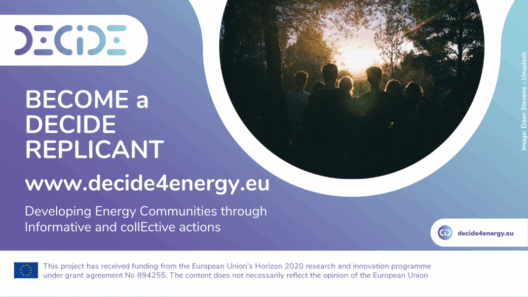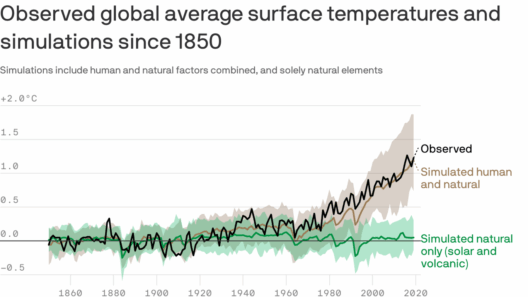In the modern world, commuting has become an integral part of daily life for millions. Yet, beneath the surface of convenience lies a formidable adversary: climate change. Every mile traversed in a gasoline-powered vehicle emits a chain reaction of consequences that contribute to the ever-growing climate crisis. This phenomenon, often referred to as “The Gasoline Gamble,” invites scrutiny, sparking curiosity about how our daily habits may unwittingly perpetuate environmental degradation.
The tumultuous relationship between commuting and climate change begins with the undeniable reality of fossil fuel combustion. Gasoline-burning vehicles emit carbon dioxide (CO2), a greenhouse gas that traps heat in the atmosphere. The Transportation sector, responsible for nearly 29% of greenhouse gas emissions in the United States, predominantly relies on these fossil fuels. Each day, the average American spends approximately 54 minutes commuting. This seemingly innocuous ritual accumulates significant emissions, warranting a reassessment of how we approach our commutes.
As we embark on a journey through the myriad ramifications of our commuting choices, it’s crucial to grasp the intimate link between personal convenience and global consequences. The gasoline gamble extends beyond the individual; it dovetails with systemic issues, including urban planning, economic policy, and energy production. Urban areas, typically characterized by sprawl, necessitate that residents depend on personal vehicles for mobility. Sadly, this reliance not only exacerbates greenhouse gas emissions but also engenders social inequities, as lower-income individuals and communities of color often reside in areas with less access to public transportation. Such realities underscore the need for a paradigmal shift in how we envision urban development.
The urgency of addressing these issues becomes more pronounced when we consider the effects of climate change. Rising average global temperatures have been linked to increased frequency of extreme weather events, including hurricanes, droughts, and flooding. These phenomena not only threaten ecosystems but endanger human lives and livelihoods. The transportation infrastructure in many cities is ill-equipped to handle the increased severity of these events. Moreover, when commuting infrastructure is disrupted, the repercussions ripple through local economies.
The essence of what we consider “convenience” should not eclipse the broader implications of our choices. Many commuters might liken the act of driving to a well-oiled machine – a transformative experience steeped in comfort. However, the truth is that the convenience we seek often comes at an astronomical environmental cost. The carbon footprint of a single vehicle is steep, averaging about 4.6 metric tons of CO2 each year. Considering that there are over 270 million registered vehicles in the US, the collective impact can be daunting. Each car on the road represents not just convenience, but a perpetuation of a cycle that feeds climate change.
In a bid to change course, it is essential to explore alternatives to gasoline-powered commuting. Public transportation, cycling, carpooling, and pedestrian-friendly infrastructure present viable options that can dramatically mitigate our carbon emissions. Cities like Amsterdam and Copenhagen exemplify successful models where cycling has been embraced, leading to substantial reductions in vehicular traffic and a concomitant decrease in pollution levels. These examples can embolden communities to rethink their commuting strategies, transforming cityscapes into greener, more sustainable environments.
Furthermore, telecommuting has emerged as a beacon of hope in the contemporary workforce landscape. The COVID-19 pandemic catalyzed a massive shift toward remote work, unveiling the potential for reduced commuting frequency. As businesses and employees navigate the future of work, maintaining elements of telecommuting can significantly alleviate the burdens of fossil fuel dependency. Striving for a hybrid model that embraces both traditional and remote engagements offers a formidable opportunity to shrink our carbon footprints.
Nonetheless, personal choice is only part of the equation. Policy-level interventions are paramount to catalyze transformative change at a broader scale. Governments must prioritize investments in renewable energy infrastructure, endorse clean transportation initiatives, and institute stringent regulations to limit emissions. Incentives for electric vehicle adoption, along with the expansion of electric public transit, can spearhead this transition. A veritable revolution in energy consumption is conceivable only when individual actions are supplemented by systemic support and environmental stewardship.
Encouragingly, awareness surrounding climate change is experiencing a renaissance, fueled by grassroots movements, educational campaigns, and scientific validation. Citizens are becoming increasingly cognizant of how individual actions converge to shape environmental outcomes. This collective consciousness underscores a burgeoning responsibility among commuters to engage actively in conversations surrounding sustainable transport options. Cities that empower citizens to participate in the design of their public transit systems may yield innovative solutions capable of addressing climate challenges.
Ultimately, the gasoline gamble compels individuals to weigh their commuting practices against the backdrop of global ecological health. Each trip taken in a gasoline-powered vehicle not only contributes to greenhouse gas emissions but also reinforces a reliance on an unsustainable model. The journey toward a more sustainable transportation paradigm necessitates curiosity, innovation, and collaboration across all sectors of society. It is time for commuters to re-imagine their daily rituals, reframing convenience for sustainability, and collectively charting a course toward a greener future.
In conclusion, examining the myriad connections between commuting and climate change is a necessary endeavor. The ecological consequences of our reliance on gasoline go far beyond our immediate surroundings; they encapsulate a narrative of interconnectedness and responsibility. The questions that arise from this exploration invite both individual introspection and communal dialogue, fostering a shift in perspective. Empowered with knowledge, individuals can challenge the status quo, seeking alternatives that not only enhance mobility but also safeguard the planetary future.







